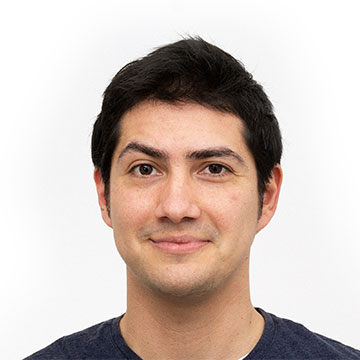All types of knowledge, ultimately mean self knowledge.
— Bruce Lee
Any organization that aims to someday become a great one has an untold and unwritten mission: to keep up with what’s going around it and, I believe more importantly, with what’s going on inside. If you read that right, you might have noticed that it doesn’t only apply to organizations, but to people as well. That’s why I like to think about organizations as if they were people. People without faces, maybe, but with names and attitudes and stories that shaped how they became what they are today. An organization’s history, to me, is a collection of all those stories about becoming, about change.
Change is not only inevitable, it’s also fast, unruly and unpredictable. That can often make it hard for people to embrace change, because let’s face it: who in their right mind wants to embrace something that happens in a fast, unruly and unpredictable fashion? And yet, it is inevitable.
I think it was Dolly Parton who said it best: “Find out who you are and do it on purpose”. I guess that’s a good way to define what goes on in Manas’ internal reviews. As good as any other definition, probably, but let’s go along with it.
An internal review (from obsolete French reveue, from revoir ‘see again’) for us is similar to what agile development teams call a retrospective. Of course, that is probably due to the fact that we are an agile development team. In agile terms, a retrospective is a meeting that’s held at the end of an iteration, during which the team reflects on what happened in said iteration and identifies actions for improvement going forward. Even if you don’t know the precise definition of an ‘iteration’, you get the picture: we decide what period of time we’re comfortable with, and hold a meeting at the end of it, where the team reflects on what happened during that period, to identify actions for improvement going forward. An important difference here is that we review the entire organization as a whole, which is a little more complex than simply looking back on the work of the past two weeks.
Last Wednesday was one of those days. We all sat down together, to look up from our screens and into each other’s faces, to share what we’ve been up to for the past months, and to acknowledge each other for all the hard work accomplished during that time. It’s an intense and rewarding experience. And like all emotional labor, it can be draining.
This post aims to give you a more accurate idea of what takes place during one of our reviews. So here goes:
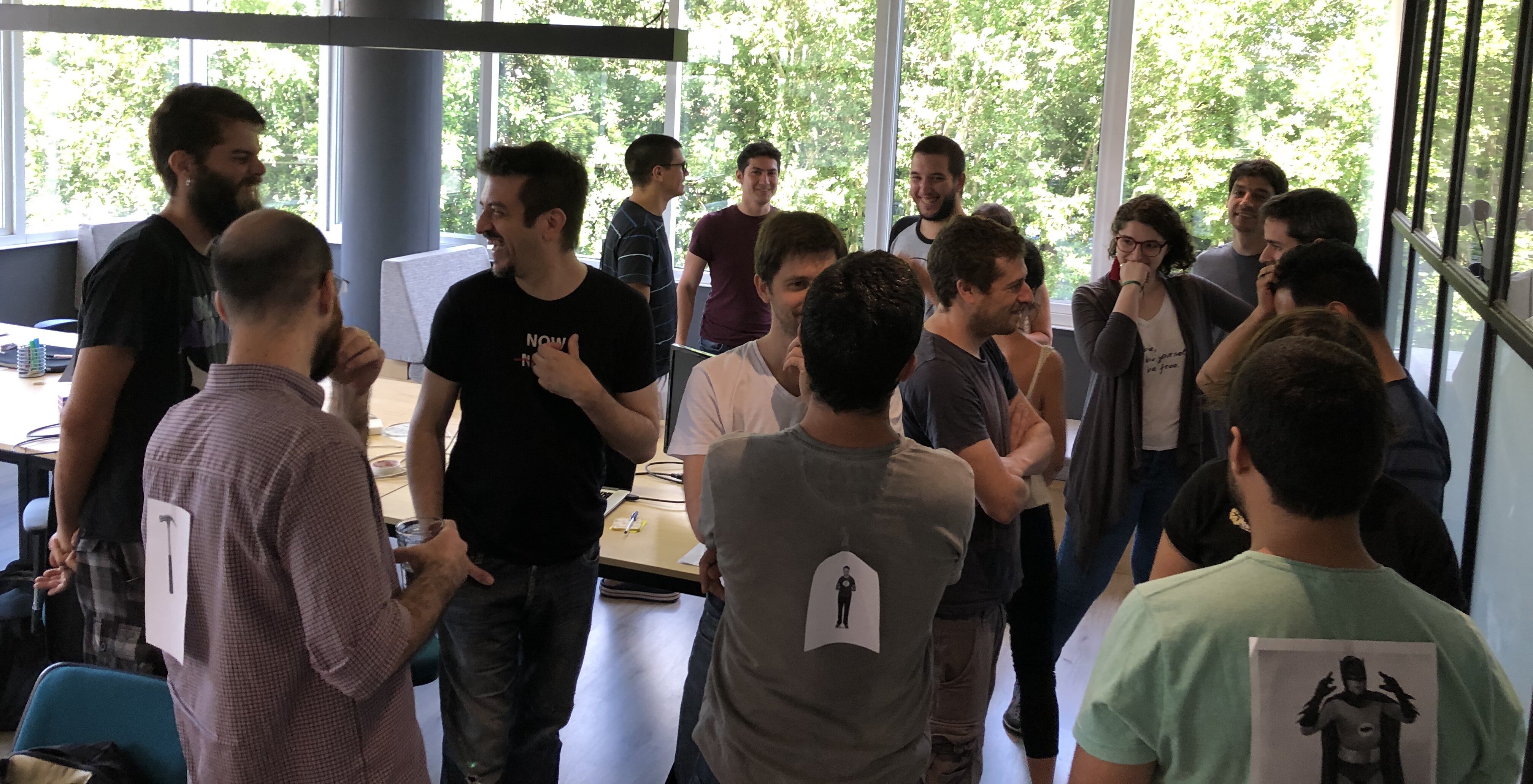
To break the ice and to get our blood flowing, we kicked things off with a fun little game.
This was nothing too elaborate, just a way to break the habit of sitting in front of a computer and coding the day away. It was quite successful in that. Also, laughter ensued.
After that, we all got to work on revisiting the organization’s history, to better understand how we got to where we are, and freshen-up on lessons learned.

We ended up with a timeline on the wall, and a bunch of post-its and magnets on it, which allowed a visualization of 15 years of history at a quick glance. It brought a lot of anecdotes and fond memories of projects, clients and people that came and went through Manas. It also set the stage for what came next, a presentation by our founder, on how the organization looks towards future growth, supported by all the introspection that the timeline brought to the surface.
After sharing a much deserved lunch break, the day’s activities continued with a speed-feedback session: a fast-paced series of one-on-one, flash conversations that had us going up and down every corner of the office, in which everyone took one minute to sit with everyone else in the team, and gave feedback on their work and contribution to the organization.
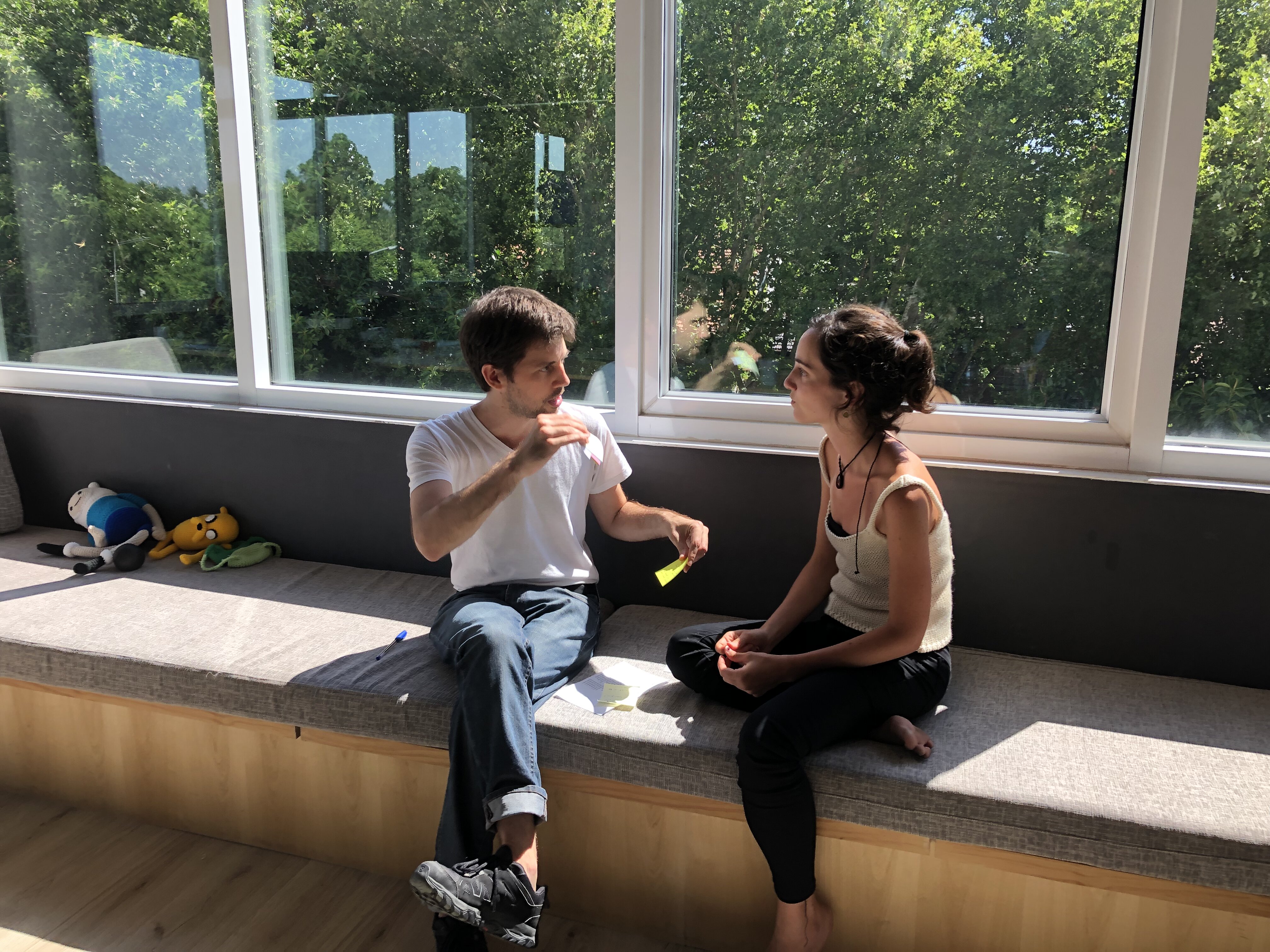 | 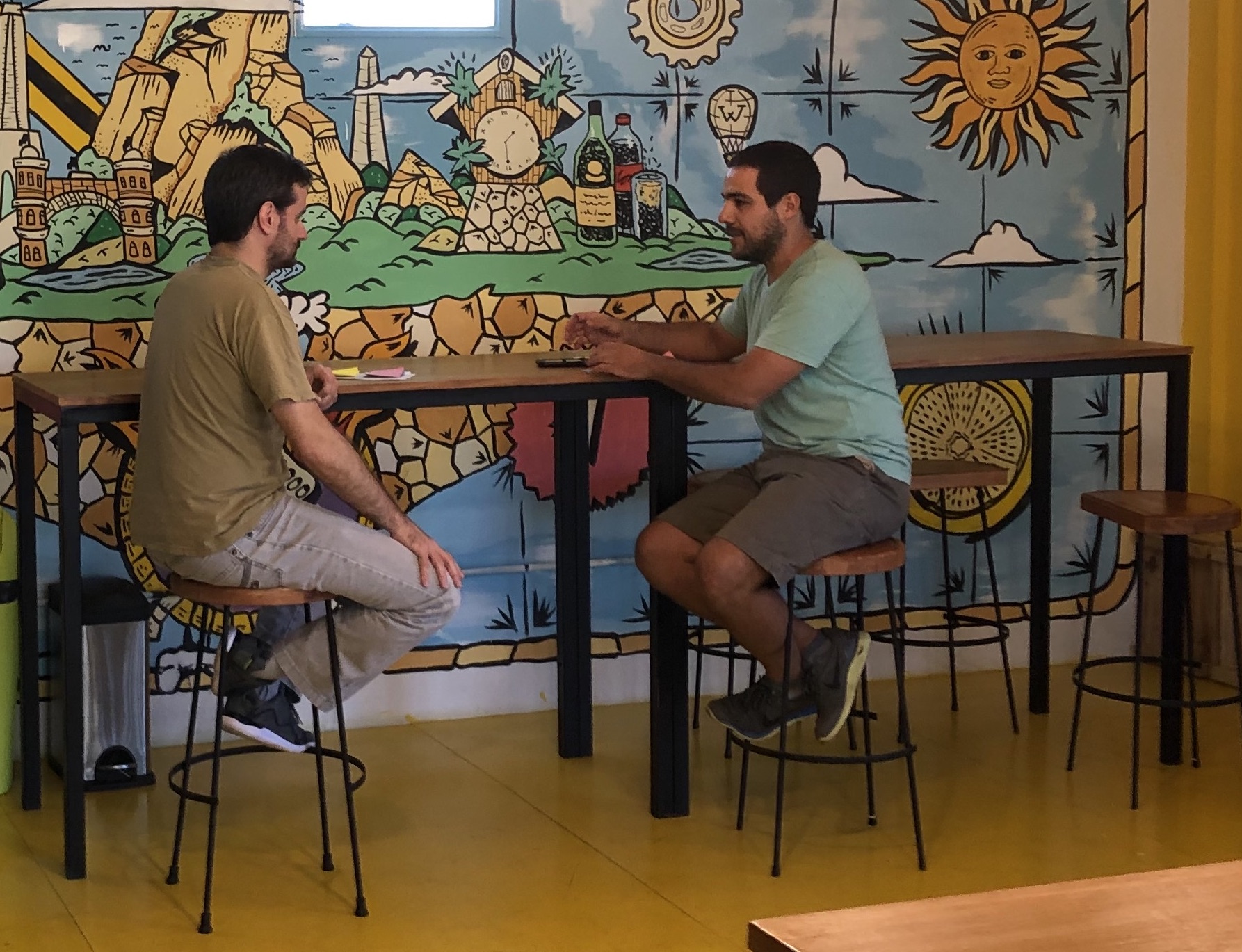 | 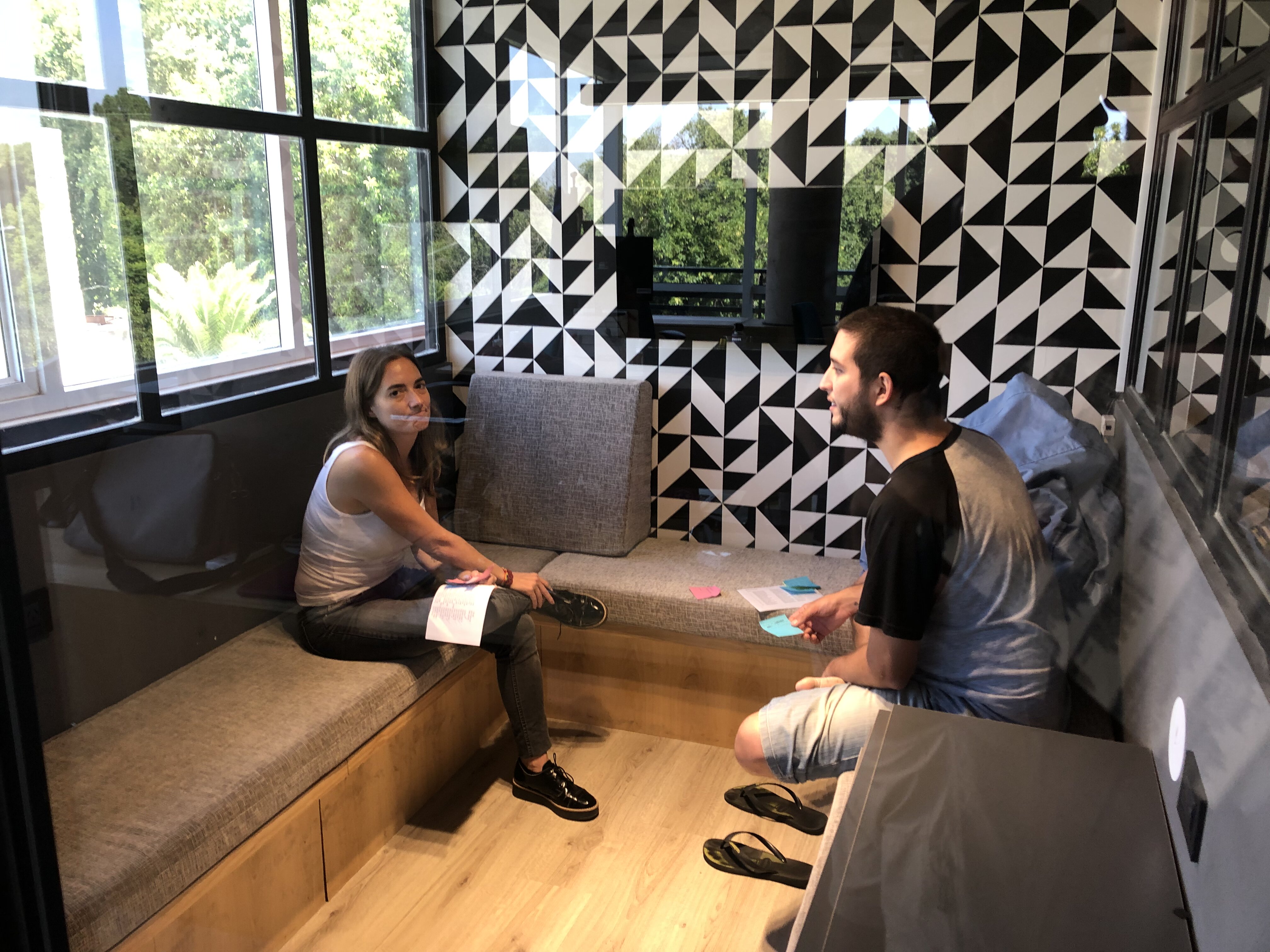 |
These one-on-one sessions help consolidate how every member relates to every other person in the organization, regardless of how often they work together and how much interaction that requires. They also enable a unique type of conversation, and create an opportunity to see the impact of one’s contribution in the eyes of everyone else.
Towards the end of the day, we all got together again and sat in for a group reflection on how each of us perceived Manas, through the eyes of an artist we all had met with during the previous two days. Each drawing was based on how each of us described the organization to the artist, and they all turned out to be substantially different from the rest, which led to a very interesting conversation about perspectives, subjectivity and points of view.

An organization’s contribution to society is determined by its vision, by how it sees itself, the challenges and opportunities in the environment, and its own abilities to face the former and seize the latter. In that sense, an organization depends heavily on how its members see the world around them to survive and thrive, and that of course includes how they see the organization itself. Events like these are a way for the organization to keep itself updated on that information, to learn what it needs to learn, and to renew the commitment with its members. Eduardo Galeano famously once said that “after all, we are what we do to change who we are”. We agree.
